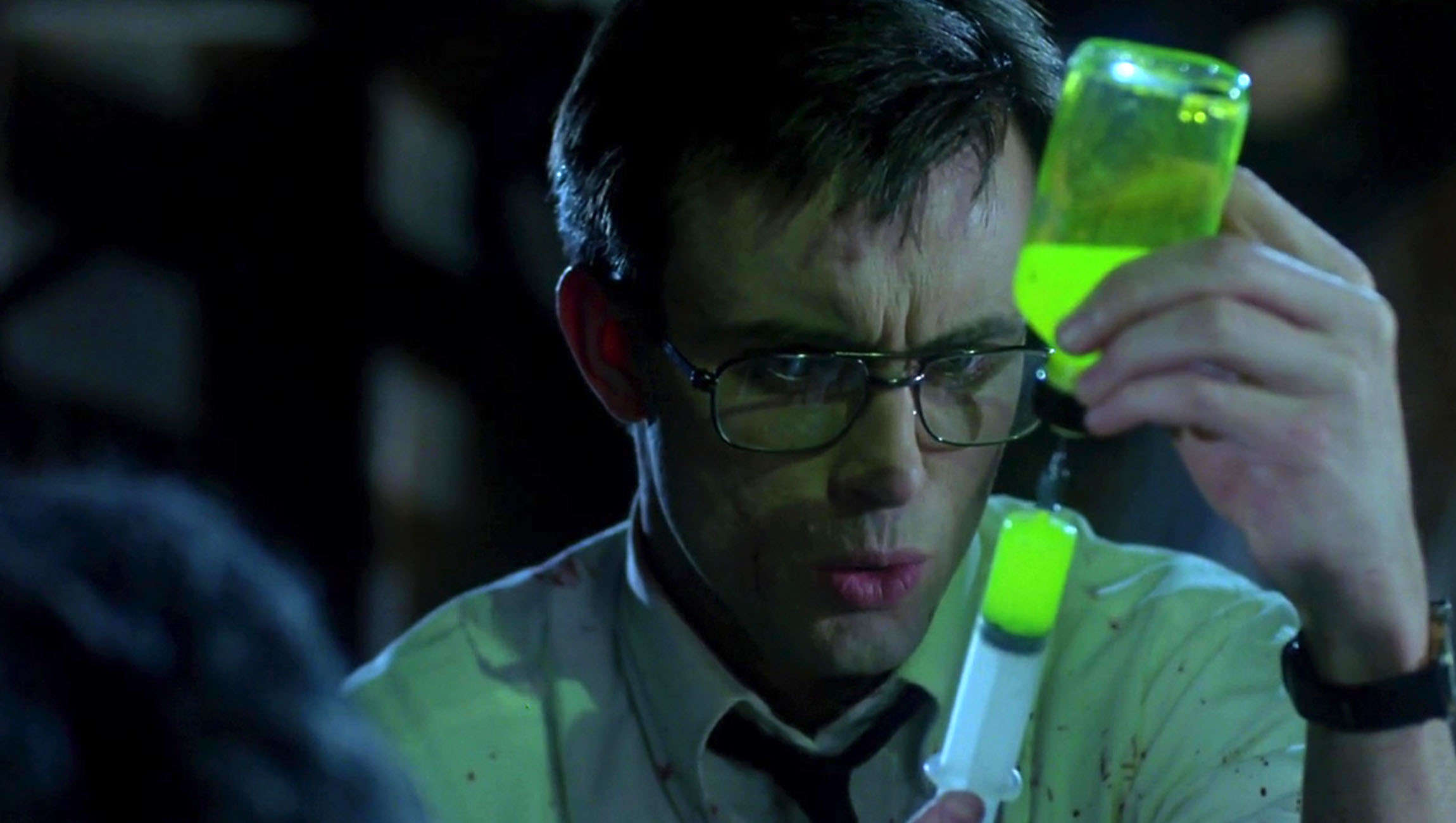Create a free profile to get unlimited access to exclusive videos, sweepstakes, and more!
Microbes reanimating after 100 million years have taken suspended animation to a sci-fi level

Something that has been dormant for millions of years is unlikely to come back to life unless Herbert West injects it with a revival serum like the green ooze in Re-Animator (above), but there are life-forms that defy the ravages of time.
Suspended animation has been taken to the extreme by microbes that were dormant since dinosaurs trampled the Earth. An international research team from the Japan Agency for Marine-Earth Science and Technology (JAMSTEC) and other institutions have unearthed different species of microbes from the South Pacific Gyre that amazingly stayed inactive, but alive, for up to a hundred million years until they were revived with the right nutrients. Some of them have been around before humans ever existed.
“Microbial communities widely distributed in organic-poor abyssal sediment consist mainly of aerobes that retain their metabolic potential under extremely low-energy conditions for up to 101.5 million years,” said senior JAMSTEC scientist Yuki Morono, who led a study recently published in Nature Communications.
Back when beasts like Spinosaurus terrorized Cretaceous seas, these bacteria got caught up in dust, random particles, and marine snow (debris from the sea surface that falls to the seafloor). They eventually became trapped in the oxygen-rich sediment these materials formed in the abyssal depths. As their metabolic functions slowed down, they entered a state of suspended animation, and exposure to the dissolved oxygen in the sediment kept them from perishing. Morono’s team found that so long as no more than 3 to 6.5 meters of sediment accumulated every million years, oxygen would still be able to penetrate the sediment, keeping the dormant microbes alive.
There are other organisms capable of entering a state of torpor when conditions are harsh or there is not enough food available. However, there is a big difference in shutting off for days or months versus hundreds of millions of years.
“The rapid initial increases in incubated cell abundance, the high percentages of active cells in the incubations, and the confining nature of their sedimentary habitat—collectively suggest that microbial communities in [oxygen-rich] subseafloor sediment persist in metabolically active form for at least 101.5 million years,” Morono observed.
Morono found that the microbes which had remained inactive for so long entered a state of suspended animation because layers of thick clay and rock blocked many incoming nutrients. Giving them those nutrients in the lab started them up again almost as if nothing had happened, though the longer the microbes had been dormant, the longer they took to wake up. What was even more amazing about the reanimated microbes is that they not only started moving around again, but thrived—as in enough to multiply. Cells need to metabolize a certain amount of carbon before they can become metabolically active again, let alone divide.
While the evolution of these next-to-immortal bacteria has yet to be demystified, one thing the team was able to infer is that they must have evolved extremely slowly compared to other related bacteria. This is why NASA scientists are looking into possible methods of putting astronauts into a temporary state of suspended animation during missions into deep space, so they can avoid most of the stresses that microgravity and space radiation burden the human body with. Taking it slow has its benefits when you intend to hang around for a while.
“The microbial cells have been inferred to consume oxygen coupled to oxidation of marine organic matter at extremely slow rates,” said Morono.
At least single-celled organisms don’t have complex systems which would need to shut down advanced metabolic processes for years, so a Re-Animator phenomenon is unlikely.














